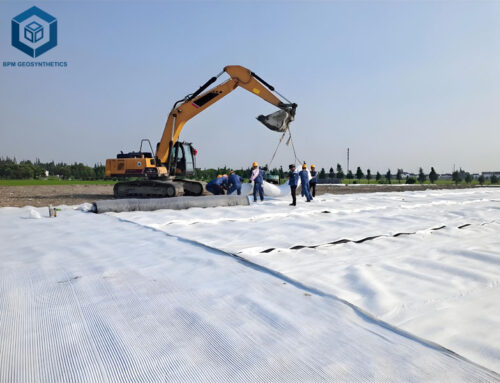Needle Punched Geotextile is a new type of building material. It is a water-permeable geosynthetic material made of synthetic fibers through needle punching or weaving. The finished geotextile is in the form of cloth-like, generally with a width of 4 to 6 meters and a length of 50 to 100 meters.
Needle Punched Geotextiles are divided into filament polyester geotextiles and short fiber needle punched geotextiles. Today we are going to talk about how to choose needle punched geotextile.
1. What Is Needle Punched Geotextile?
Needle punched geotextile is a geosynthetic material that undergoes a needle-punching process to create a robust and versatile fabric. This type of geotextile is manufactured using either short fibers or polyester curly short fibers. During the production process, these fibers are intertwined and entangled through needle punching or weaving techniques. The result is a three-dimensional structure that exhibits exceptional properties.
One of the key characteristics of needle punched geotextile is its impressive tensile strength. The interlocking fibers provide a sturdy and resilient fabric that can withstand significant forces. This makes it highly suitable for applications that require reinforcement and stabilization of soil or other materials.
Needle punched geotextile is a versatile geosynthetic material that combines strength, extensibility, corrosion resistance, and favorable permeability characteristics. Its applications range from soil stabilization and reinforcement to filtration and drainage systems, making it a valuable solution in various civil engineering and environmental projects.
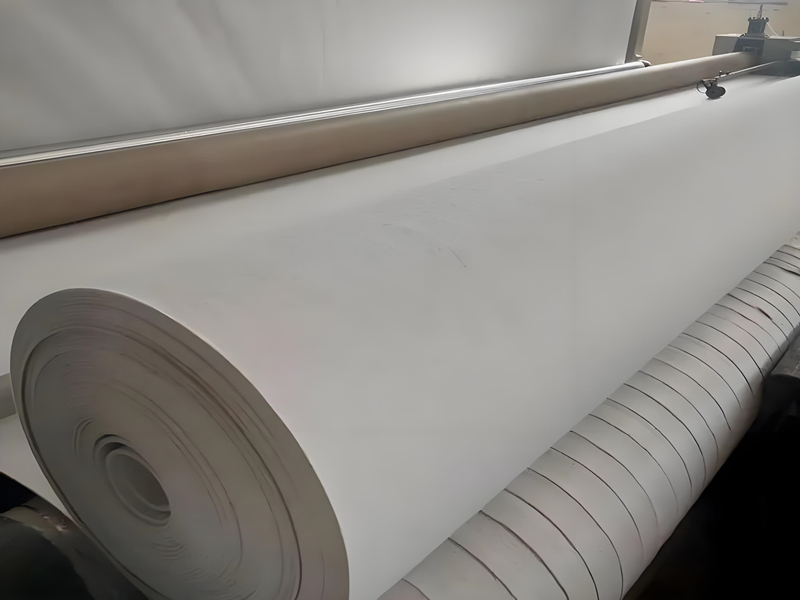
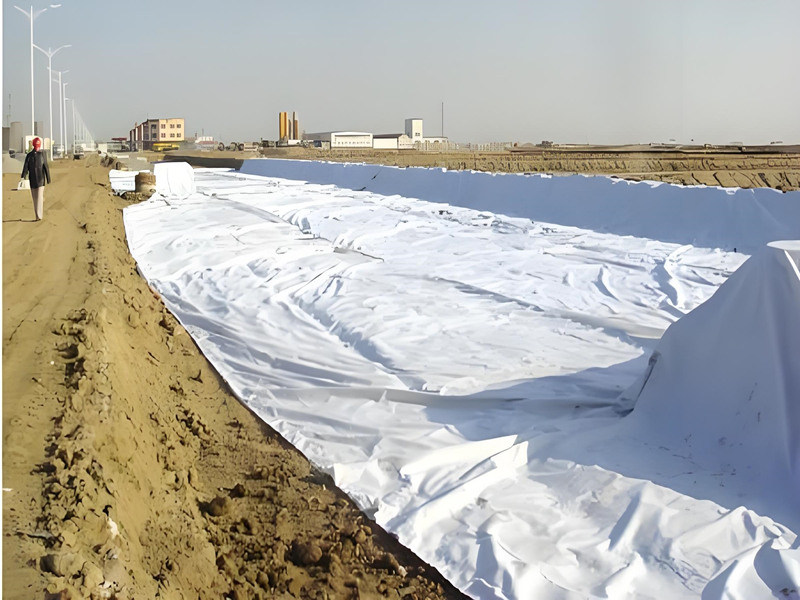
2. What Are Benefits of Needle Punched Geotextile?
BPM Geotextile offers several advantages and serves multiple functions in various applications. Here are the key advantages and functions of needle-punched geotextile:
2.1 Needle Punched Geotextile – Isolation
Needle-punched geotextile serves the purpose of separating building materials that have distinct physical properties, such as soil and sand, or soil and concrete. By preventing the loss or blending of these materials, it ensures the integrity and functionality of each component, while also improving the load-bearing capacity of the structure.
2.2 Needle Punched Geotextile – Filtration
When water flows from the fine soil layer into the coarse soil layer, the good air permeability and water permeability of the needle-punched geotextile are used to allow the water to pass through and effectively carry soil particles, fine sand, small stones, etc., to Maintain the stability of water and soil engineering.
2.3 Needle Punched Geotextile – Drainage
Needle-punched geotextile has good water conductivity. It can form drainage channels inside the soil to drain excess liquid and gas out of the soil structure.
2.4 Needle Punched Geotextile – Erosion Control
Geotextile can help mitigate erosion by stabilizing soil surfaces and providing a protective barrier against water flow. It can be used in slope stabilization, riverbank protection, and coastal erosion control projects.
2.5 Needle Punched Geotextile – Soil Stabilization
Geotextile improves the stability and load-bearing capacity of soils, particularly in soft or weak subgrades. It distributes the load more evenly and reduces the potential for settlement or deformation.
2.6 Needle Punched Geotextile – Protection
When water flows against the soil, it effectively diffuses, transfers or decomposes the concentrated stress, preventing the soil from being damaged by external forces.
3. What is Needle Punched Geotextile Used For?
Punched geotextile has a wide range of applications in civil engineering, construction, and environmental projects. Some common uses of needle-punched geotextile include:
3.1 Road Construction
Punched geotextile finds extensive use in road construction projects to enhance road performance and durability. It is employed as a separation layer between the subgrade and base course, preventing material mixing and providing additional stability.
3.2 Erosion Control
Geotextile is commonly used for erosion control purposes, including slope stabilization, riverbank protection, and coastal erosion prevention. It helps stabilize soil surfaces, control sediment runoff, and safeguard against erosion caused by water flow or wave action.
3.3 Drainage Systems Utilizing Geotextile
Punched geotextile is utilized in drainage systems to facilitate efficient water flow while preventing the migration of fine particles. It is often employed as a filter or wrapping material around drainage pipes to prevent blockage and ensure proper water drainage in applications such as retaining walls, landfills, and sports fields.
3.4 Landfill Liner
Geotextile plays a crucial role in landfill liner systems. It acts as a separation layer between the waste material and soil, preventing groundwater contamination and providing stability to the landfill structure. It also enables effective leachate collection and drainage.
3.5 Environmental Protection Projects
Punched geotextile is employed in environmental protection projects, including soil remediation and containment of pollutants. It can encapsulate contaminated soil or create barriers to prevent the migration of pollutants into the surrounding environment.
3.6 Railway and Airport Construction
Geotextile finds diverse uses in railway and airport construction projects. It provides separation and stabilization between different soil layers, mitigates settlement risks, and enhances the load-bearing capacity of tracks and runways.
3.7 Civil Engineering
Punched geotextile is extensively used for soil reinforcement and stabilization in civil engineering projects. It is applied in embankments, retaining walls, and foundations to improve soil strength and stability, minimizing settlement and potential failures.
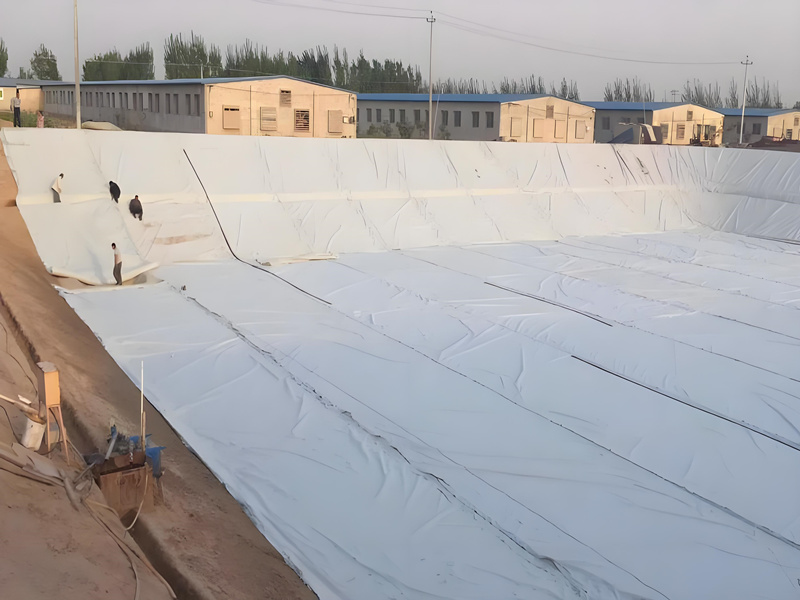
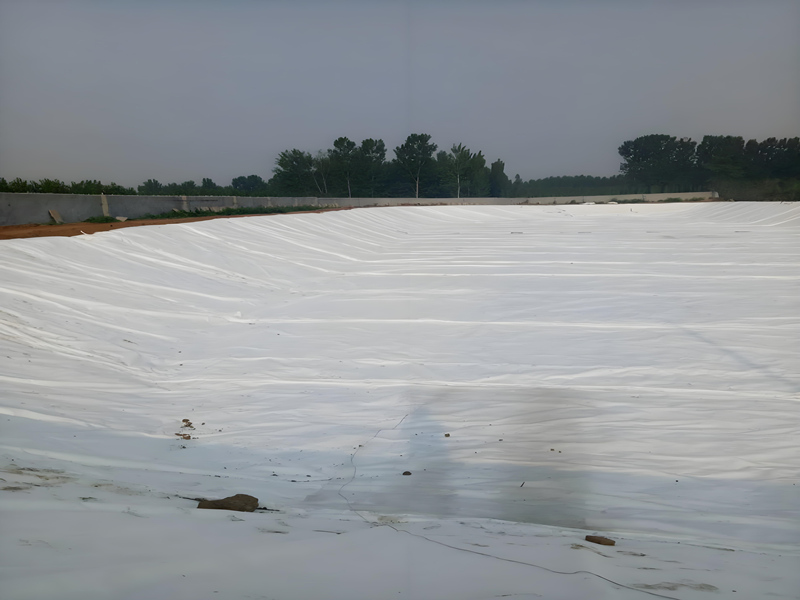
4.How To Choosing Right Needle Punched Geotextile?
Choosing the right needle-punched geotextile involves considering several factors to ensure it meets the specific requirements of your project. Here are some key considerations to help you make an informed decision:
4.1 Material
Geotextiles are usually made of polypropylene, polyester fiber, and other materials. Different materials have different properties, such as strength, corrosion resistance, temperature resistance, etc. You need to choose the appropriate material based on the specific use environment and needs.Polypropylene geotextile has good corrosion resistance. Polyester geotextile has good anti-aging effect.
4.2 Weight
The weight of the Needle Punched geotextile determines its strength and tensile properties. Select a geotextile of appropriate weight based on project needs to ensure it can withstand the required loads and stresses. From 100g/m2 to 1200g/m2. The greater the gram weight, the higher the tensile strength, the better the protective effect, and the relative drainage capacity will be worse.
4.3 Specifications and Sizes
Choose the appropriate size Needle Punched geotextile according to the specific requirements of the project. Considering the coverage area and ease of construction, select a geotextile of appropriate length and width. From 1m to 6m width, from 50m to 200m length. Choose a decent length and width based on the actual size of the project.
4.4 Standards and Certifications
Check if the geotextile complies with relevant industry standards and certifications, such as ASTM, ISO, and local regulatory requirements.
4.5 Manufacturer’s Expertise
Consider the reputation and expertise of the geotextile manufacturer. Look for manufacturers with a proven track record, industry experience, and a history of producing high-quality geotextiles.
4.6 Functional Requirements
Needle Punched Geotextiles have multiple functions, such as isolation, filtration, drainage, reinforcement, etc. You need to choose the appropriate geotextile based on your specific use needs. If you only require simple filtration, you can choose a small gram weight geotextile, such as 150g/m2. If isolation is required, you can choose 250g/m2 or 300g/m2.However, if it is required to reinforce, large grams of geotextile is a must. For example, 600g/m2, or even 800g/m2 or higher.
5. Summary
When selecting needle punched geotextiles, consider factors such as tensile strength, permeability, durability, and cost. Tensile strength ensures stability in soil reinforcement projects. Permeability allows water flow while preventing soil particle migration. Durability is key for long-term performance in harsh environments. Cost should be balanced with quality to ensure value for money. Consult experts and manufacturers to make an informed decision.If you’re looking for high-quality geotextiles you can trust, BPM Geotextile is the right choice for you.
Any questions, please contact us.

